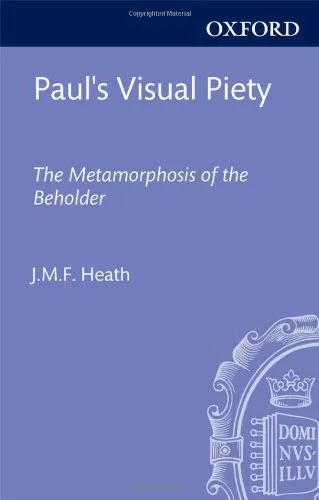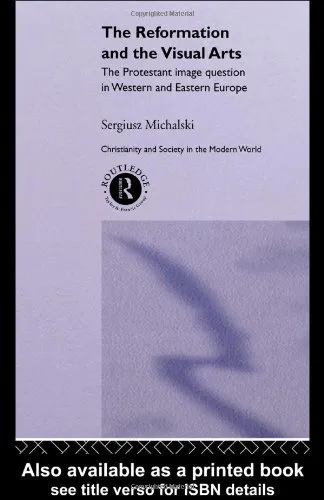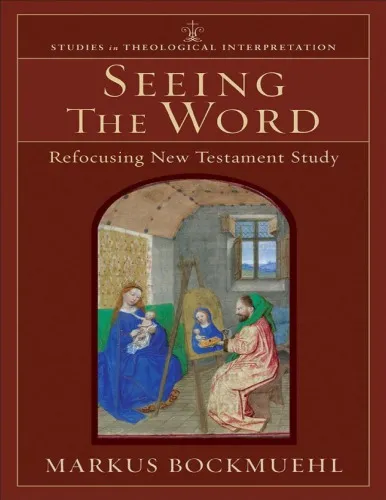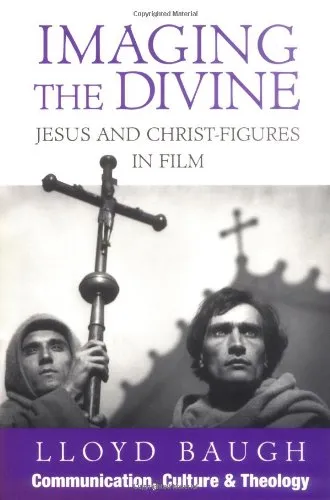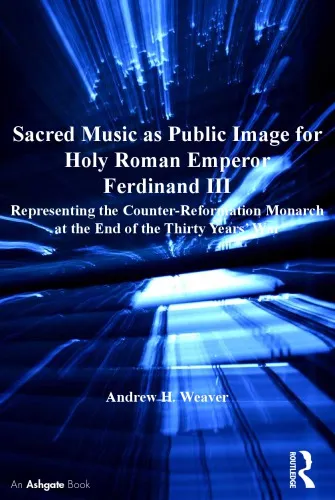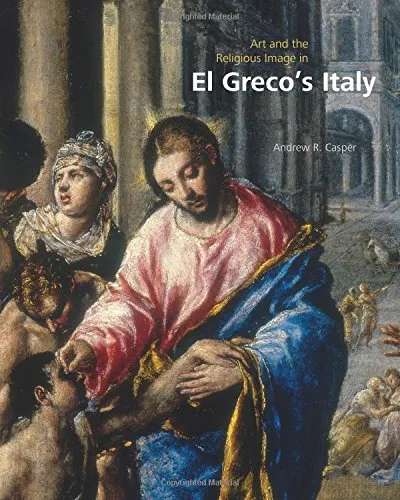Paul's Visual Piety: The Metamorphosis of the Beholder
5.0
بر اساس نظر کاربران

شما میتونید سوالاتتون در باره کتاب رو از هوش مصنوعیش بعد از ورود بپرسید
هر دانلود یا پرسش از هوش مصنوعی 2 امتیاز لازم دارد، برای بدست آوردن امتیاز رایگان، به صفحه ی راهنمای امتیازات سر بزنید و یک سری کار ارزشمند انجام بدینکتاب های مرتبط:
خلاصهای جامع از کتاب
کتاب «Paul's Visual Piety: The Metamorphosis of the Beholder» نوشته ج.م.ف. هیت، سفری عمیق به درک تصویری پولس رسول و تحولاتی است که در باورها و دیدگاههای بصری پیروان او ایجاد شده است. این اثر، به بررسی عمیق دیدگاههای پولس در خصوص نقش تصاویر و تجسمها در فرایند ایمان میپردازد و چگونگی شکلگیری یک نگرش جدید و منحصر به فرد را به کمک متون مقدس و آثار هنری بررسی میکند.
کتاب به پنج بخش اساسی تقسیم شده است که هر یک جنبههای مختلفی از تعاملات بصری و دینی را بررسی میکند. هیت با بهرهگیری از منابع تاریخی و مذهبی گسترده، خواننده را به درک روشهای متنوعی از تفکر و انتقال ایمان دعوت میکند که در نهایت به تغییرات عمیق در نگرشها و رفتارها منجر میشود.
پیشنهادات کلیدی
- درک عمیق از تأثیر تصاویر بر تحول ایمانی
- تعریف جدید از معنویت و زیباییشناسی در مسیحیت اولیه
- تحلیل نقش هنرمندان و فلاسفه در شکلگیری اعتقادات بصری جامعه
- بررسی تأثیر متقابل بین متون مقدس و آثار هنری
نقل قولهای مشهور از کتاب
"در جهانی که ایمان و تصویر به هم پیوند خوردهاند، هر تجسمی خود سفری به عمیقترین لایههای باور است."
"زیباییشناسی پولس نه تنها در کلمات، بلکه در شکلگیری یک دوربین بصری جدید برای درک جهان نهفته است."
اهمیت این کتاب
این کتاب برای دانشجویان الهیات، هنرهای زیبا و تاریخپژوهان مذهبی اهمیت ویژهای دارد. با بررسی دقیق و پژوهشمحور، «Paul's Visual Piety» به درک عمیقتری از شناخت بصری در دوران پولس میپردازد و چگونگی تاثیرگذاری این شناخت را بر نسلهای بعدی نشان میدهد. این اثر، بهویژه با تمرکز بر تعامل فعالانه بین برخی از برجستهترین آثار هنری مسیحیت اولیه و متون مقدس، به یک منبع حیاتی برای پژوهشهای آکادمیک و فهم عمومی از مبانی فرهنگ مسیحیت تبدیل شده است.
Introduction to "Paul's Visual Piety: The Metamorphosis of the Beholder"
Welcome to a transformative exploration of religious and visual culture in "Paul's Visual Piety: The Metamorphosis of the Beholder." This book delves deeply into how visual imagery played a pivotal role in shaping early Christian thought and how it continues to influence spiritual experiences today. Through this detailed analysis, we are invited to perceive sacred visuals not just as passive representations but as active agents in the religious imagination.
Detailed Summary of the Book
In "Paul's Visual Piety: The Metamorphosis of the Beholder," we examine the Apostle Paul's perspective on visual theology and its implications on early Christian experiences. This book traverses through various theological landscapes, showcasing how Paul's piety was visually manifested and how it metamorphosed the ancient beholder's experience. The narrative weaves through Pauline texts, exploring the apostle's views on religious imagery, divine-human interaction, and the transformative power of seeing. Emphasizing how early Christians interacted with and interpreted visuals, the book reveals new dimensions of understanding religious art and imagery.
Key Takeaways
- Paul's writings set a foundational principle for understanding visual representation in early Christianity.
- Visual piety is seen not just as an aesthetic experience but a form of spiritual transformation.
- The role of the beholder in religious experience has evolved over centuries, underscoring the subjective nature of visual interpretation.
- The exploration of metaphors and narratives within Pauline texts reveals deeper theological meanings.
Famous Quotes from the Book
"In Paul's view, to behold is not merely to see with the eyes, but to transform with the heart."
"The images of faith are not stagnant; they breathe and move within the beholder, creating spiritual metamorphosis."
Why This Book Matters
This book is an essential read for anyone interested in the intersection of art and religion. It provides a unique lens through which to view the role of visuality in spiritual contexts, offering fresh insights into Paul's theological framework. The work challenges contemporary perceptions of religious imagery and compels readers to reconsider the dynamic interaction between viewer and visual in historical and modern contexts. By unraveling the complexities of Paul's visual piety, it bridges the gap between ancient texts and modern spirituality, making it a significant contribution to both theological discourse and art criticism.
دانلود رایگان مستقیم
شما میتونید سوالاتتون در باره کتاب رو از هوش مصنوعیش بعد از ورود بپرسید
دسترسی به کتابها از طریق پلتفرمهای قانونی و کتابخانههای عمومی نه تنها از حقوق نویسندگان و ناشران حمایت میکند، بلکه به پایداری فرهنگ کتابخوانی نیز کمک میرساند. پیش از دانلود، لحظهای به بررسی این گزینهها فکر کنید.
این کتاب رو در پلتفرم های دیگه ببینید
WorldCat به شما کمک میکنه تا کتاب ها رو در کتابخانه های سراسر دنیا پیدا کنید
امتیازها، نظرات تخصصی و صحبت ها درباره کتاب را در Goodreads ببینید
کتابهای کمیاب یا دست دوم را در AbeBooks پیدا کنید و بخرید
1348
بازدید5.0
امتیاز0
نظر98%
رضایتنظرات:
5.0
بر اساس 0 نظر کاربران
Questions & Answers
Ask questions about this book or help others by answering
No questions yet. Be the first to ask!
